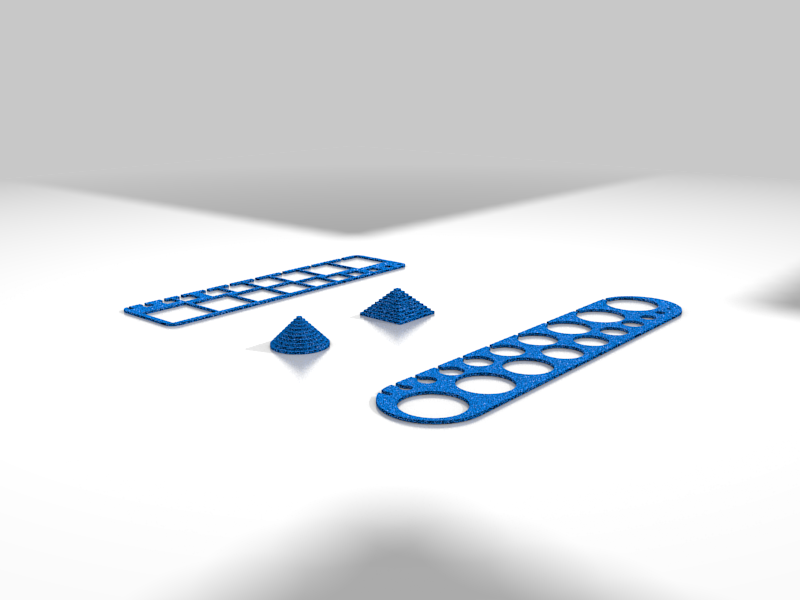
Dimensional Calibration Test
thingiverse
Fast, Low Material, Calibration test for holes, gaps, matching pegs, XY orthogonality and scale. It's meant to have fast iteration rounds while fine tuning both printer and slicer, to achieve good accuracy in printing functional parts that are meant to fit together. Other calibration tests were taking too long and using too much material. They are useful as final verification of the tuning, but IMHO not quite efficent in rapid iterations. About printing/using the models: * Squares and circles have respectively sides and diameters going from 20mm to 2mm, in steps of 2mm. * Gaps in the perimeters of both squares and circles are 2mm wide, minus the smallest square. That one has a 1mm gap. * Thickness of the plates is 1mm. Each level of the pyramid/stepped cone is 1mm thick. * The pyramid and the stepped cone are meant to fit exactly in the corresponding holes in the masks, both with and without gaps. * Cura uses different strategies for holes with closed perimeter and holes with open perimeter, hence the versions with and wthout gaps. Both must fit the probing pyramid/cone pegs. * Do not allter the drawings, for compensating for elephant foot. The elephant foot is an artefact caused by the slicer, fix it there. You want to tune the tool, and once, instead of ltering each and every drawing you will print. * Print without skirt/brim/raft/anti-warp tabs. * To verify that both X and Y dimensons have same precision, and that they are at 90 deg, est the inserton of the pyramid and the stepped cone at varous angles, in the same hole: 0, 90, 180, 270. .
With this file you will be able to print Dimensional Calibration Test with your 3D printer. Click on the button and save the file on your computer to work, edit or customize your design. You can also find more 3D designs for printers on Dimensional Calibration Test.
